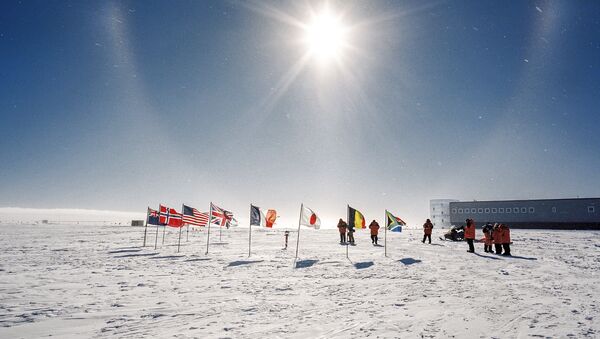https://sputnikglobe.com/20200402/no-ice-there-new-finding-reveals-shocking-details-about-the-climate-of-antarctica-90-mln-years-ago-1078807562.html
No Ice There? New Finding Reveals Shocking Details About the Climate of Antarctica 90 Mln Years Ago
No Ice There? New Finding Reveals Shocking Details About the Climate of Antarctica 90 Mln Years Ago
Sputnik International
Previously, very little was known about the environmental conditions of the Antarctic Circle during the mid-Cretaceous period but a new scientific study has... 02.04.2020, Sputnik International
2020-04-02T15:45+0000
2020-04-02T15:45+0000
2020-04-02T15:45+0000
https://cdn1.img.sputnikglobe.com/img/107880/74/1078807499_0:612:2540:2048_1920x0_80_0_0_f7509ab903a58a8a402bbd1fd5159884.jpg
antarctic
south pole
Sputnik International
feedback@sputniknews.com
+74956456601
MIA „Rossiya Segodnya“
2020
Sputnik International
feedback@sputniknews.com
+74956456601
MIA „Rossiya Segodnya“
News
en_EN
Sputnik International
feedback@sputniknews.com
+74956456601
MIA „Rossiya Segodnya“
Sputnik International
feedback@sputniknews.com
+74956456601
MIA „Rossiya Segodnya“
newsfeed, society, antarctic, south pole, cretaceous period
newsfeed, society, antarctic, south pole, cretaceous period
No Ice There? New Finding Reveals Shocking Details About the Climate of Antarctica 90 Mln Years Ago
Previously, very little was known about the environmental conditions of the Antarctic Circle during the mid-Cretaceous period but a new scientific study has brought forward not only some new details about the environment around the South Pole at that time, but also led to some shocking revelations.
Traces of temperate rainforests located south of the Antarctic Circle 90 million years ago have been discovered by a team of scientists from the UK and Germany, a study published by Nature revealed.
The researchers scanned a part of the core from the region to discover pollen, preserved roots and remnants of flowers, which pointed to the existence of a rainforest 900 km south of the South Pole. The average temperature at the Antarctic Circle during the mid-Cretaceous period was thereby estimated to be around 12 degrees Celsius, challenging the possibility of an ice cap existing at the South Pole at that time.
The work also throws into doubt the current understanding of the climate models of that period, as the levels of CO2 in the atmosphere were much higher 115 million years ago than initially thought.

12 December 2019, 16:50 GMT
The Cretaceous period lasting from 145 to approximately 66 million years ago
was considered to be one of the warmest intervals in the last couple of hundred millions of years. Little was known about the environment in Antarctica during that period, but the new findings suggest that despite a four-month polar night, temperatures in the region at that time closely resembled the climate that exists in northern European countries today.


